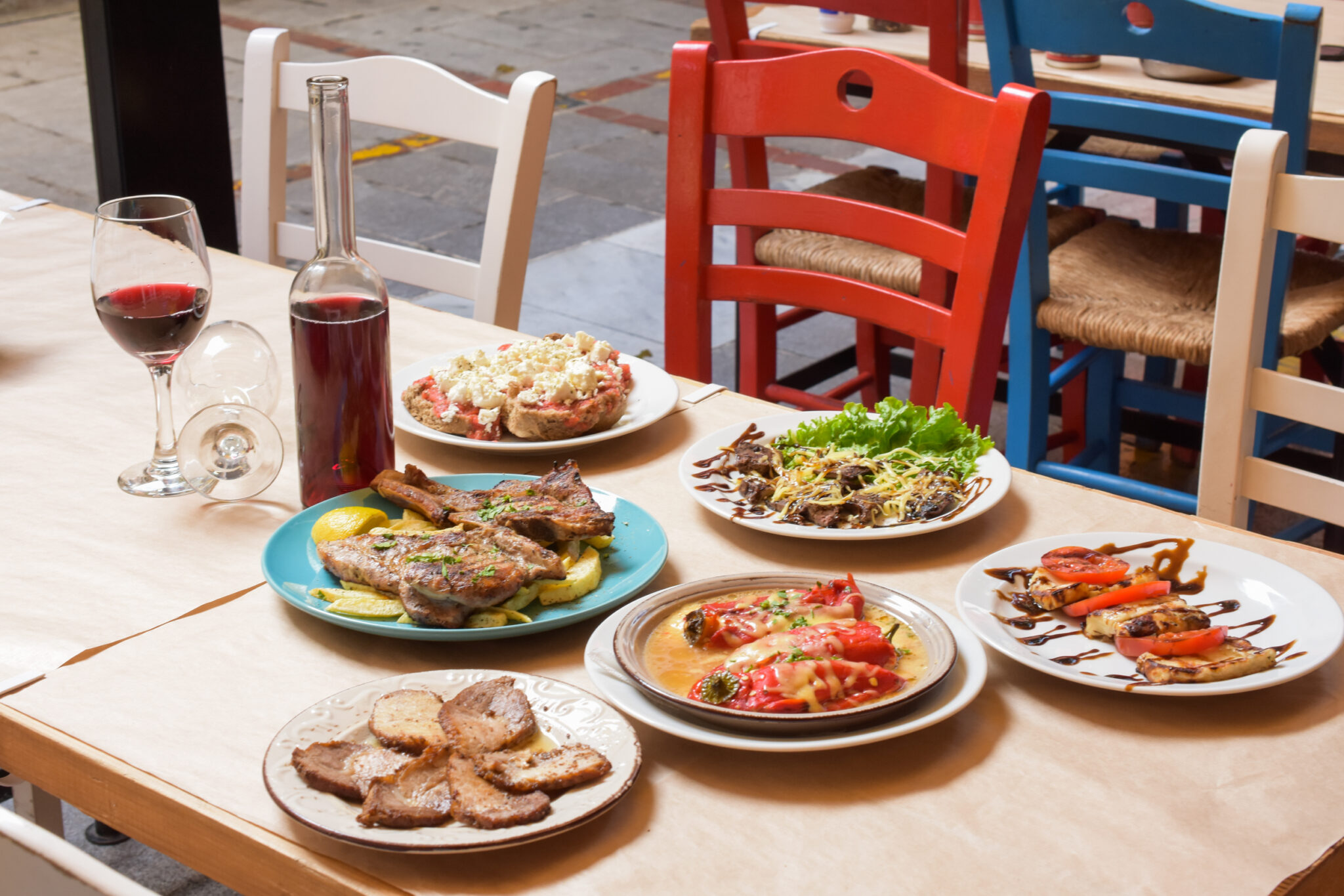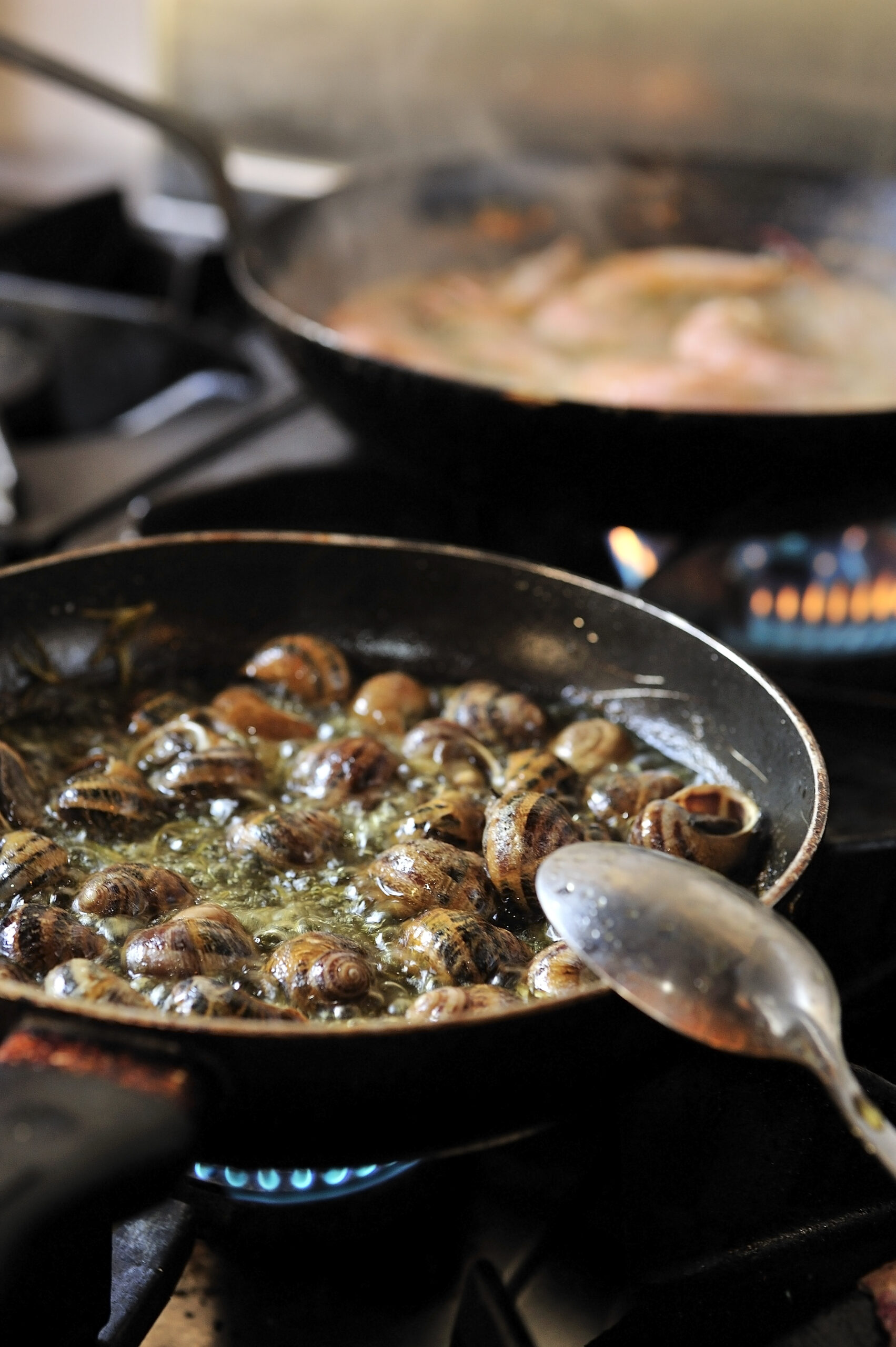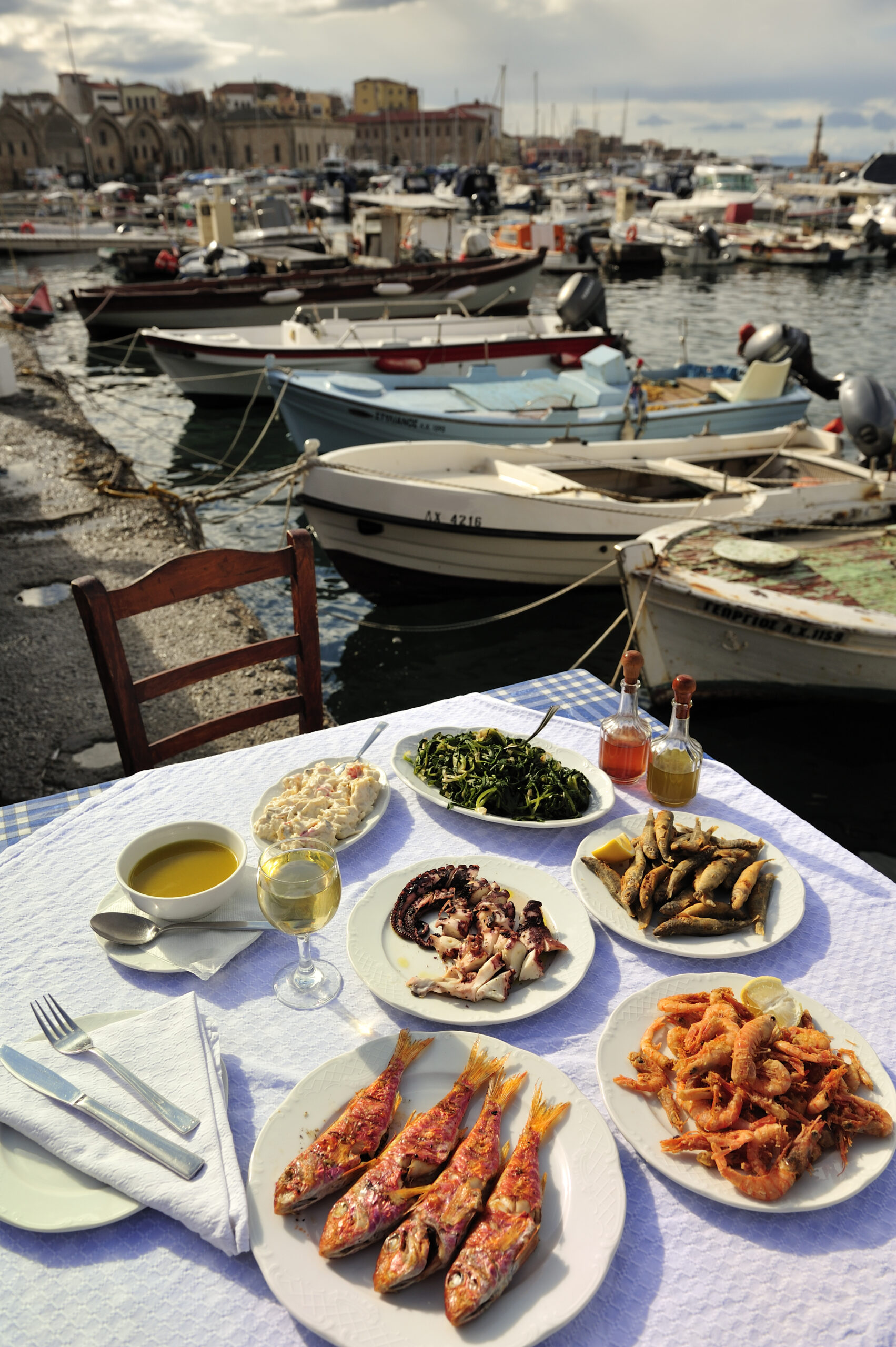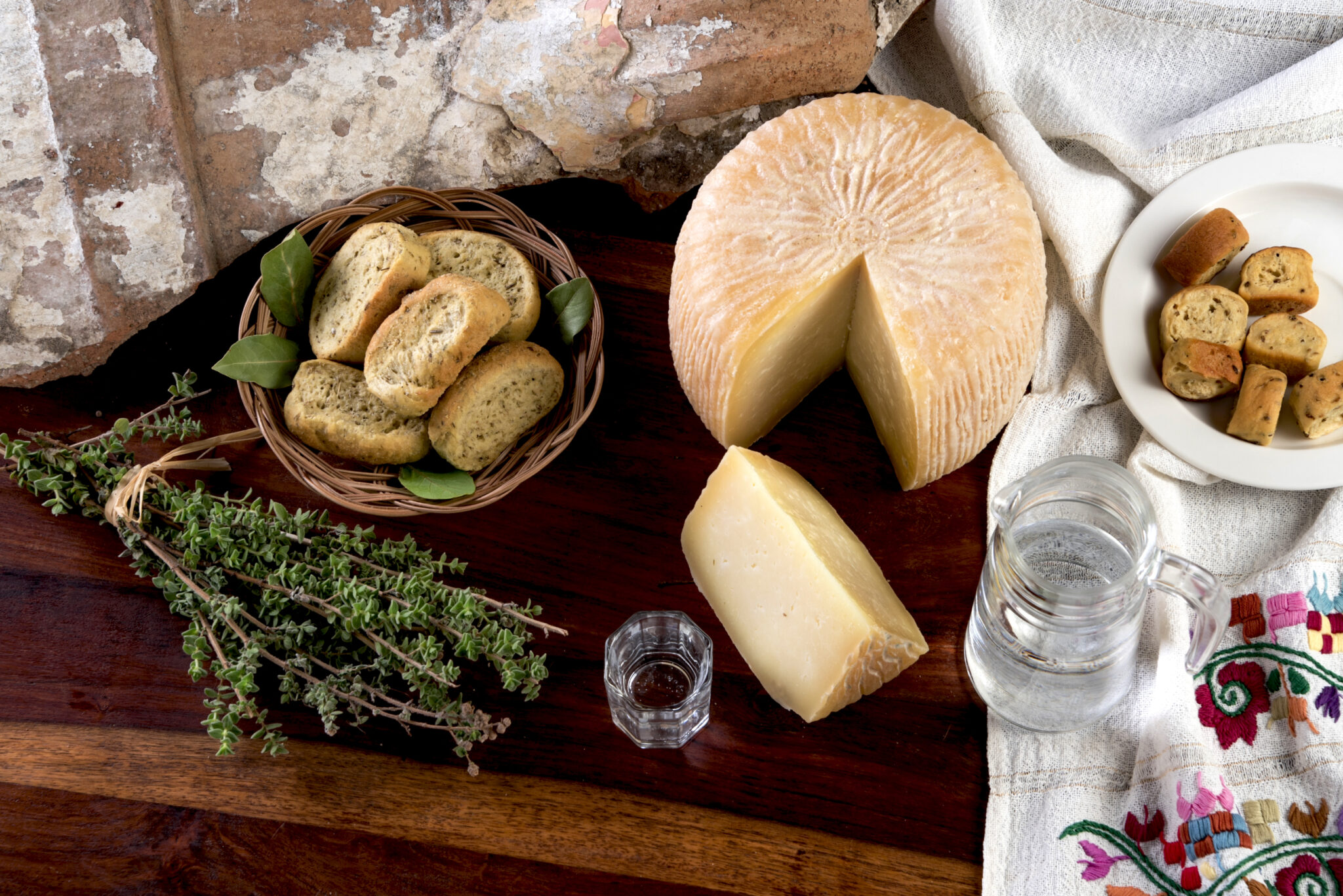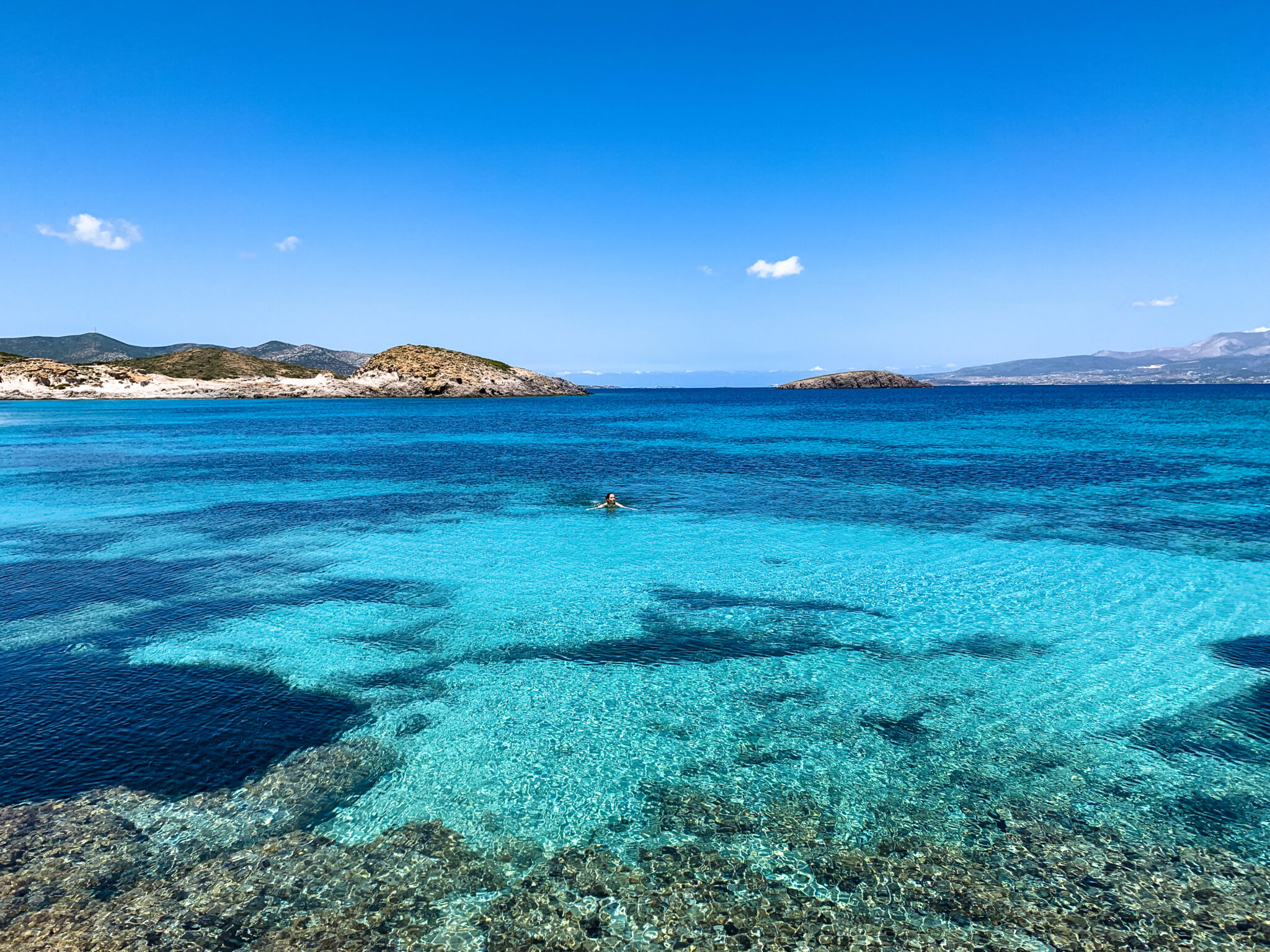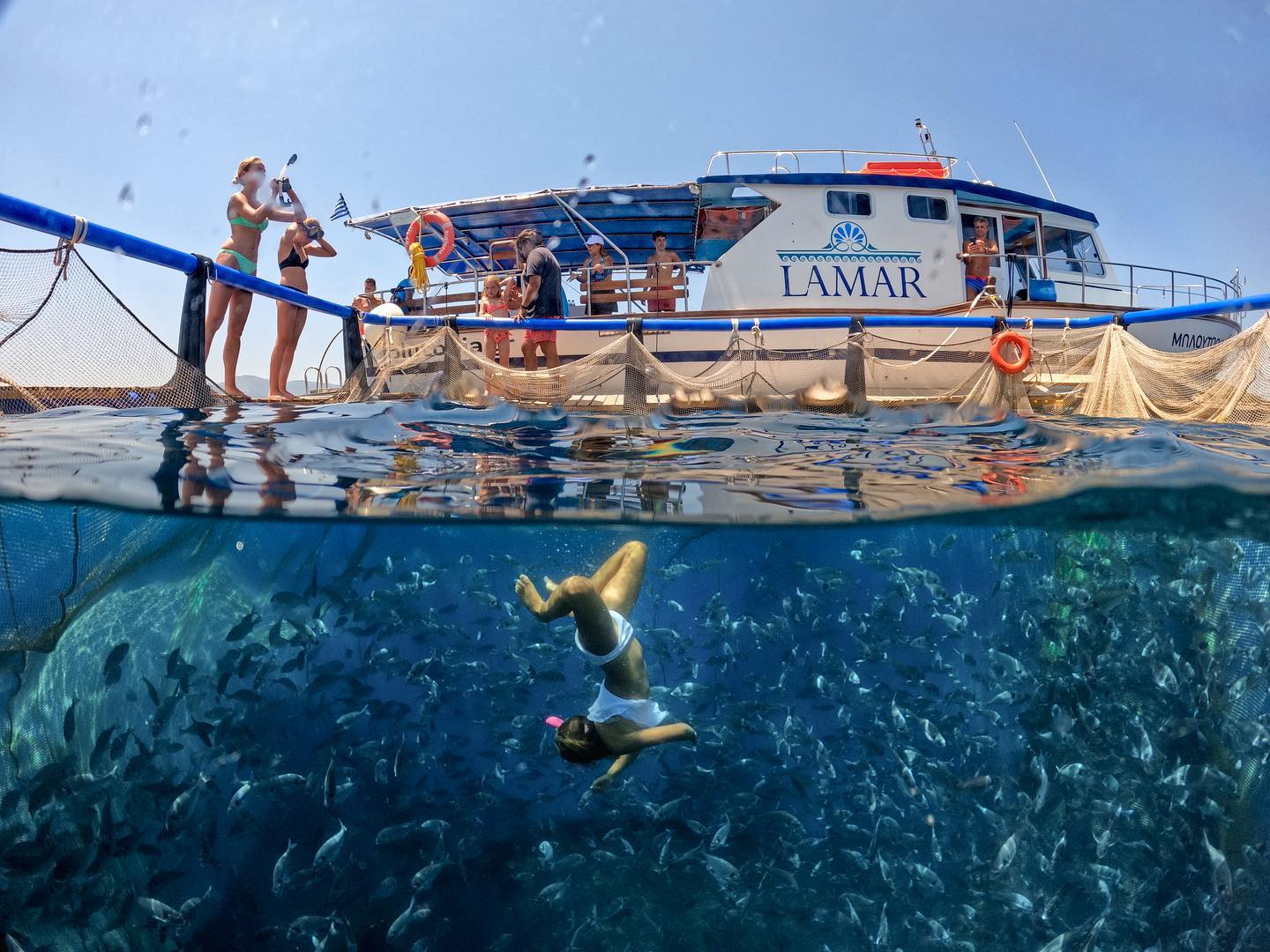The cuisine of Heraklion could easily be characterised as multicultural. Influenced by Venetian gastronomy in its urban version, and with a strong Asia Minor influence since 1922, it coexists with rural cuisine, based on simplicity and the absolute seasonality of home cooking. Often, traditional dishes include Smyrna-type ‘soutzoukakia’ (meatballs), beef dishes uncommon elsewhere on the island, and the use of spices unfamiliar to other regions, like cinnamon, clove, and allspice.
In Heraklion, some Venetian recipes still survive, such as the sweet-savoury Carnival ‘tzoulamas’ dish from Messara, a pie with a phyllo crust, chicken livers, raisins, almonds and pistachios, dusted with cinnamon, sugar, and nutmeg. Wild greens, a key component of local cooking, are prepared plain, commonly accompanying meat or fish, added to pies, simply blanched for salads or added to omelettes.
Historically, meat-based recipes were few and far between, generally reserved for special occasions, as animals were primarily milk-bearing, tasked with producing essential dairy products. On festive days, meat was typically boiled, and seldom cooked in other ways. The boiled meat or chicken was usually paired with pasta, not rice, cooked in a broth – hence the term ‘sizouma’ (zoumi means broth) dishes. However, as decades passed, meat was increasingly incorporated into the daily diet of Heraklion’s inhabitants, often accompanied by greens and herbs and cooked in a casserole or tray bake. A characteristic roast of the region is kapriko, pork braised with salt only for many hours. It has crispy skin and it is flavoured with lemon leaves after it is cooked.
Everyday meals included legumes and greens, often accompanied by the cheese that each family produced. Snails – the healthiest source of animal protein – were cooked in all manner of ways, with every winter or summer vegetable, as well as with barley and sour barley. Dishes not cooked in a tomato-based sauce were usually thickened with ‘alevrolemono’ (flour-lemon), a favourite in Chania.
Fish and seafood were not common in this region’s cuisine until 1922 when refugees from Smyrna brought with them their Turkish-influenced recipes for seafood meze and fish dishes. Pies in Heraklion are small and mainly fried, like ‘sarikopites’ (traditional Cretan pies) or ‘agniopites’, crunchy little pies, all filled with fresh sour mizithra cheese and served with thyme honey on the side, as a meze for raki, at the beginning or end of the meal, or even as a standalone treat.
Recipies from Heraklion
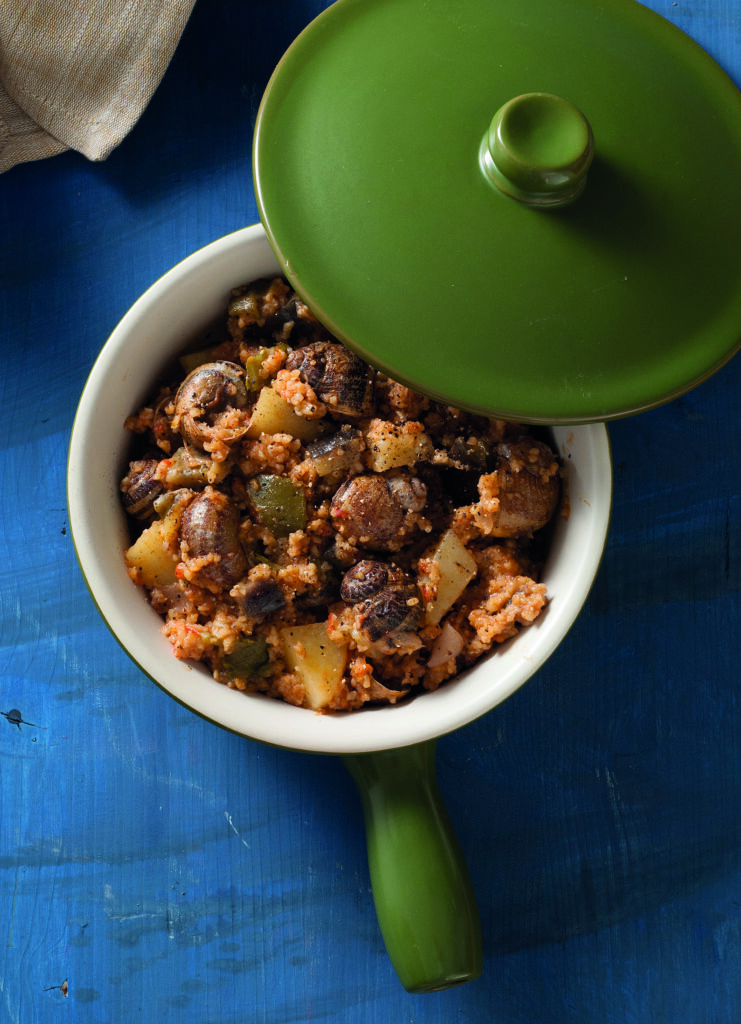
Snails with Chondro
A classic summer dish, this is a much-loved choice during the religious fasting period in mid-August, as the Greek Orthodox faith deems snails as an acceptable source of protein during times of fasting. As for the vegetables, choose those you favour most.
Serves 4
Preparation time: 30 minutes
Cooking time: 1 hour
Ingredients
30 snails
200 ml extra virgin olive oil
1 large onion, diced
1 aubergine, cubed
1 courgette, cubed
1 bell pepper, cubed
1 potato, cubed
1 large tomato, grated
1 cup of Chondro (coarsely ground wheat)
Salt, freshly ground pepper
Procedure
Start with the snails: clean the membranes around their shells with a knife. Bring a pot of water to boil, and as soon as it begins to bubble, add the snails and a teaspoon of salt. Allow to boil for 10 minutes, drain the water, and rinse them thoroughly. In a pot, sauté the onion in oil until it softens. Add the snails and let them sauté for 2-3 minutes with the onion. Using a spoon, transfer them to a plate, leaving the onion behind. In the same pot, add the vegetables and stir with a spoon until they’re glossy. Add half a glass of hot water and let them boil for 5-6 minutes. Now add the tomato, and when it starts to boil again, add approximately 720-750 ml (3 glasses) of water and a bit of salt.
As soon as the mixture begins to boil again, stir in the groats, mix well, and reduce the heat to medium. The wheat will take about 30 minutes to cook, sometimes a little longer, depending on its quality. If necessary, add more (hot) water to ensure it doesn’t stop boiling. Once it’s ready, remove the pot from the heat, cover it with a towel for 10 minutes so the food can absorb its liquids, and then serve, topped with freshly ground pepper. The dish can be enjoyed hot or at room temperature.
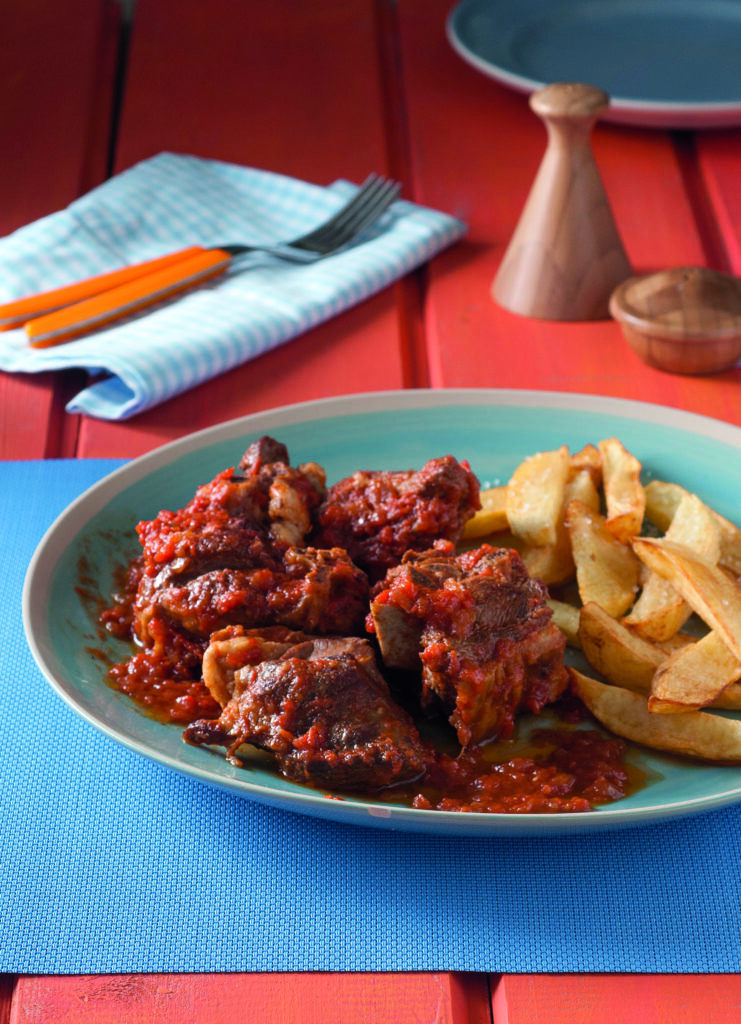
Red Stewed Goat (Aiga Kokkinisti)
Serves 4
Preparation 20 minutes
Cooking 2 hours
Ingredients
2 medium onions, diced
¾-1 cup extra virgin olive oil
1 kg goat meat, portioned
4-5 medium ripe tomatoes, grated
Salt & pepper (optional)
Procedure
Heat olive oil in a pot and sauté the diced onions until they soften. Add the goat meat to the pot and sear it until it changes colour and is lightly browned on all sides. Add a little water to the pot and bring it to a boil. Once it starts boiling, reduce the heat, bringing it to a gentle simmer. Continue to add water at gradual stages, until the meat is almost done. At this point, add the grated tomatoes. For 1 kg of meat, you should have at least a deep plate full of grated tomatoes. Continue cooking the stew without stirring with a spoon. Instead, shake the pot gently from side to side until the meat is completely tender and the sauce has thickened and is well incorporated. Allow the stew to settle for about 10 minutes and settle from the boiling process, then serve with freshly ground pepper. Serve with large chunks of potatoes fried in olive oil or “suzouma” pasta (pasta cooked in sauce).
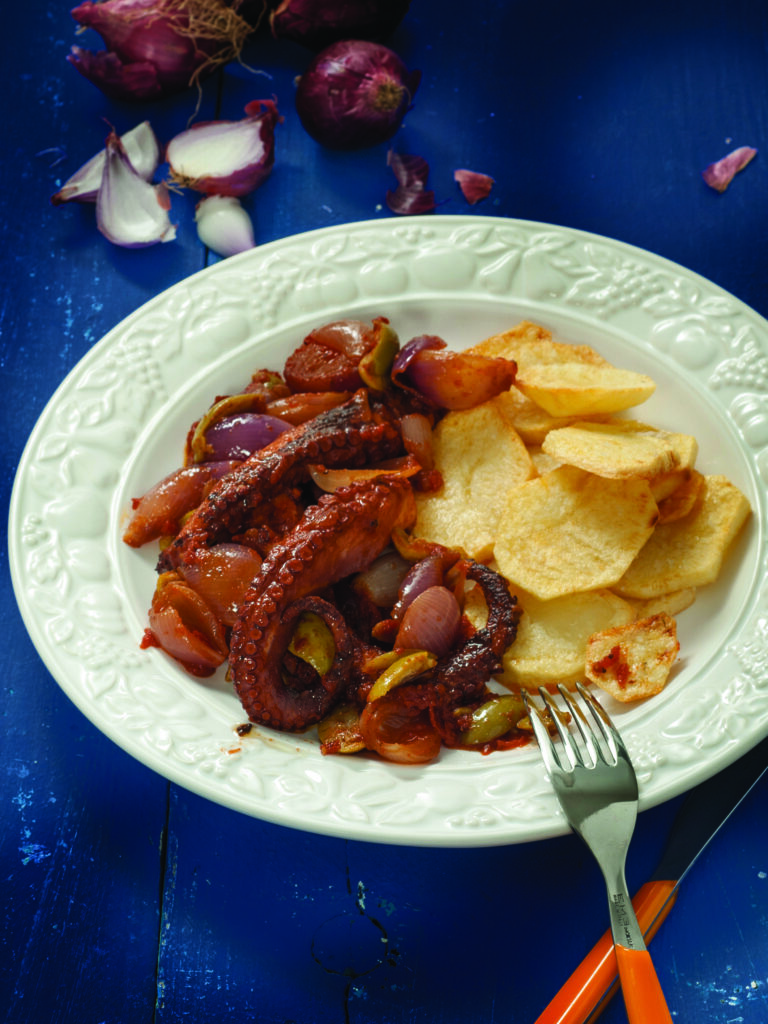
Octopus Stifado with ‘Tsakistes’ Olives
A classic Cretan recipe for octopus, with wonderful aromas and flavours coming from creased ‘smashed’ olives.
Serves 4
Preparation: 30 minutes
Cooking: 2 hours
Ingredients
1 medium fresh octopus (about 1 kg)
½ cup dry white wine
1 cup extra virgin olive oil
250 gr ripe tomatoes, grated
250 gr green olives, cracked
500 gr pearl onions, peeled
Salt & pepper
Procedure
Place the octopus in a pot, cover it with a lid and simmer over medium heat for about 1 hour until it softens and releases its juices. Deglaze the pot with the wine, allowing the alcohol to evaporate for 1-2 minutes, then add the olive oil and tomatoes. Season with salt and stir gently. When it reaches a boil, add the pearl onions, cover the pot again, and continue cooking for 20 minutes. Add the olives, cover and cook for another 10 minutes. Serve hot or warm.
Tips
If the pearl onions are not very small, you can cut them in half for better cooking. For easier serving, after the first boil, cut the octopus into rounds and continue cooking. Serve the dish with fried potatoes, they pair very well.
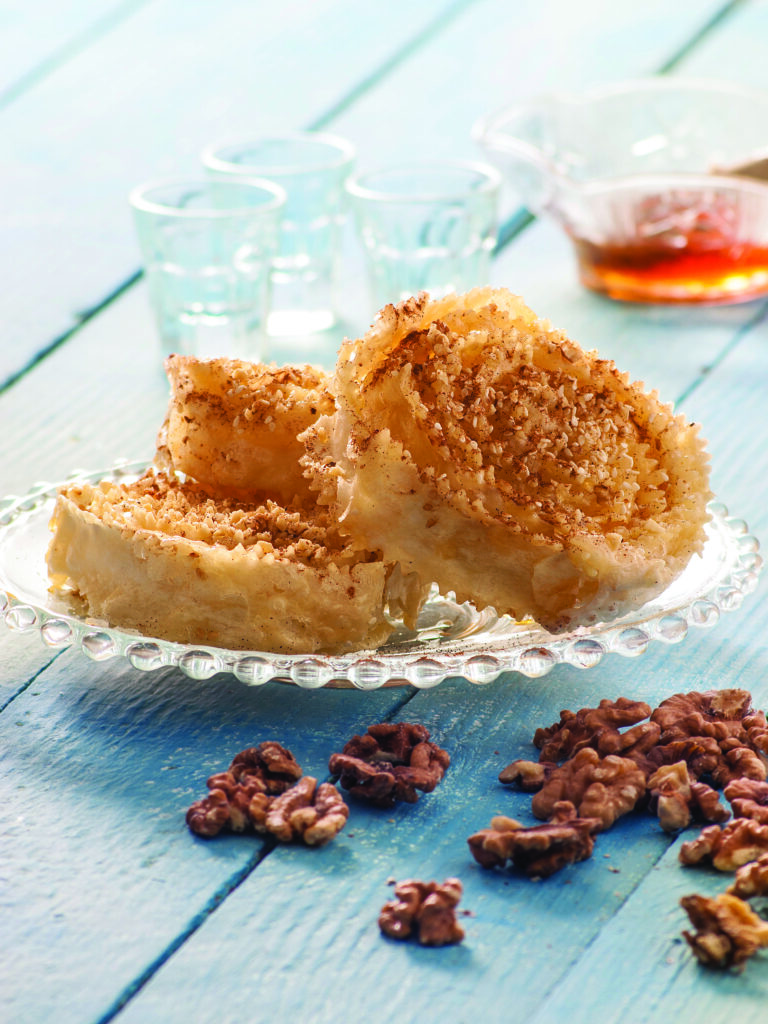
Xerotigana
The sweet offering of matrimony and celebration demands deftness in its wrapping, yet whether styled as a bow or simply folded, it tastes equally delicious.
Serves 8-10
Preparation: 30 minutes
Frying: 1-2 minutes
Boiling: 6-7 minutes
Resting: 1 hour + 15 minutes
Ingredients
For the xerotigana
3-3½ cups of all-purpose flour
¼ cup of fresh orange juice
¼ cup of water
1 shot of raki (Greek grappa)
3 tbsp of extra virgin olive oil
1 pinch of salt
For the syrup
1 cup of honey
1 cup of granulated white sugar
1 cup of water
Extra virgin olive oil for frying
1 cup of coarsely chopped walnuts for serving
Sesame seeds and cinnamon for serving
Procedure
Xerotigana: In a bowl, place the flour, creating a well in the centre with your hand. Pour the remaining ingredients into the well and gradually mix together with your hands. Knead well until a firm dough forms. Cover with a cotton towel and let the dough rest for around 1 hour. On a floured work surface, with the help of a thin rolling pin, roll out the dough into a very thin sheet. With a sharp knife or a special cutting wheel, cut the dough into 10 strips. In a wide and deep saucepan, heat ample oil over medium heat. Spread a strip of dough over your fingers, grasp one end with a fork and immerse it in the hot oil. Roll it in the pan, frying simultaneously for a few seconds until the dough stiffens slightly but is still pliable. Once you’ve rolled the entire xerotigano, allow it to colour slightly (to golden) for a few moments before transferring it to kitchen paper. Repeat the process until all the xerotigana are made. Let them cool well for at least 15 minutes.
Syrup: In a large saucepan, combine all ingredients and heat at a high temperature. Boil for 6-7 minutes until the ingredients melt and the syrup slightly thickens. Immerse the cooled xerotigana into the hot syrup a few at a time, let them soak up the syrup for 1-2 minutes, and then remove them with a slotted spoon onto a serving platter.
Sprinkle with walnuts, sesame seeds, and cinnamon, and serve.
Tips
A special cutting wheel also used for making ravioli can be found in kitchenware and utensil shops. It is easy to use, not very costly, and makes the xerotigana more attractive as it creates a wavy finish and gives the dough a lace-like appearance. If you find the process challenging, shape the dough into bows or other shapes and fry them.
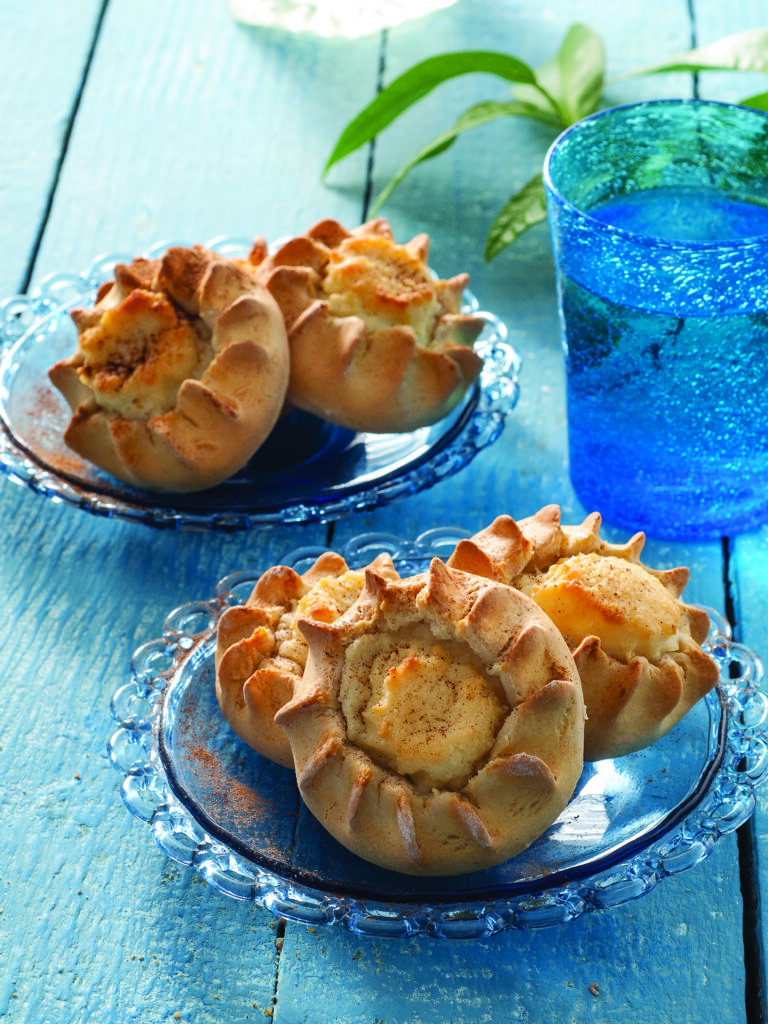
“Lantern” Kalitsounia
Although they are primarily an Easter delicacy, these are now enjoyed all year round.
Yields approximately 30 large pieces
Preparation time: 1 hour
Ingredients
For the dough
500g all-purpose flour + a little extra for rolling out the dough
1½ tsp baking powder
½ cup granulated sugar
A pinch of salt
½ tsp baking soda
¼ cup extra virgin olive oil
¼ cup sunflower oil
2 eggs
½ cup fresh whole milk
For the filling
900g sweet mizithra cheese
2 eggs
1½ cups granulated sugar
Seeds of 1 vanilla pod or 1-2 drops of vanilla extract or 1 sachet of vanillin
1 egg yolk for the glaze
2-3 tbsp fresh whole milk for the glaze
Cinnamon for sprinkling
Procedure
Dough: In the mixer’s bowl or a large bowl, combine the flour, baking powder, sugar, salt, and baking soda. In another bowl, whisk together the oils, eggs, and milk with a whisk or fork. Pour the liquid mixture into the mixer’s bowl and mix at medium speed with the dough hook for about 10 minutes, until a soft and fluffy dough is formed. Divide the dough into two balls, wrap them in cling film and refrigerate for about 30 minutes.
Filling: In a large bowl, combine the mizithra cheese, eggs, sugar, and vanilla. Mix thoroughly by hand for 2-3 minutes, until a thick, homogeneous cream is formed.
Assembly: On a floured work surface, using a thin rolling pin, roll out the dough to a thickness of about 0.5 cm (in some parts of Crete they make it very thin like filo pastry and in others slightly thicker). Using a 10cm round cutter, cut out disks of dough and set them aside, layering them with a sprinkle of flour between each one to prevent sticking.
Preheat the oven to 175°C (fan-assisted). Line two large baking trays with non-stick paper. Take a dough disk and place 1 tbsp of filling in the centre, leaving a margin of about 2 cm all around. With a toothpick or a skewer, make marks around the filling (at the point where the filling ends), without piercing through (make about 10 marks). Holding the toothpick (or skewer) vertically in one hand, lift and fold the dough around it with the other two fingers like a pinch. Remove the toothpick and continue in a circular pattern. Repeat the process with all the kalitsounia and place them on the baking trays.
In a small bowl, whisk the yolk and milk together lightly with a fork or whisk. Brush the kalitsounia with this mixture using a pastry brush and bake for 20 minutes, or until they turn a rosy colour. Sprinkle with cinnamon and serve warm or cold.
Tips
For a more homogeneous and thick filling, blend the ingredients in a food processor in two batches. For additional flavour, you can add zest from 1 unwaxed lemon to the filling.
Heraklion Raw Materials
In the expansive plains of Messara, Heraklion, and Kasteli (or Kastellion), olives, olive oil, raisins, cereals, citrus fruits, and top-quality fruits and vegetables abound. These travel year-round throughout Greece and many foreign countries. In coastal areas like Arvi and Malia, where the climate becomes subtropical, bananas and avocados are also produced. Notably, the extremely challenging cultivation of dittany in areas of Viannos is worth mentioning.
Superb extra virgin olive oil and table olives constitute the main pillars among products produced in Heraklion, with three regions offering PDO products: Extra virgin olive oil of PDO Viannos, extra virgin olive oil of PDO Peza, and extra virgin olive oil of PDO Archanes Heraklion Crete.
It would be perfectly apt to say that the heart of Crete’s winemaking beats in Heraklion, as it is estimated that the vineyards with vinifiable varieties within the county’s limits could be near to 9.8 acres. If we also consider the triply used PGI Sultanina Raisin (vinification-raisin-table), then the vineyard areas multiply.
In the Regional Unit of Heraklion, five Protected Designations of Origin have been recognised, namely: PDO Arhanes (exclusively dry red wines from Kotsifali and Mandilaria), PDO Peza (dry whites from Vilana and dry reds from Kotsifali and Mandilaria), PDO Dafnes (dry red wines from Liatiko with up to 20% Mandilaria, sweet red wines from Liatiko), PDO Handakas-Candia (which was recognised only in 2011 and geographically overlaps the other three.
Dry white wines based on the Vilana variety, with optional participation of the Vidiano, Assyrtiko, Athiri and Thrapsathiri varieties, up to 15%, as well as dry reds, from a vinification of the Kotsifali-Mandilaria varieties, in a 70/30 ratio) and, finally, PDO Malvasia Handakas-Candia (various types of sweet wines, mainly from white varieties, naturally referring to the old Malvasia). Despite this, most winemakers primarily use the Geographical Indication Crete, which allows for greater compositional flexibility and experimentation, while also being incomparably more recognisable.
Livestock farming in Heraklion is notably advanced, as is cheesemaking, with cheese units exporting their products not only throughout Greece but also overseas. Standing out among the high-quality cheese products are PDO Graviera Crete (made from sheep’s and goat’s milk, aged for at least three months), PDO Xinomyzithra Crete (a fresh soft cheese made from sheep’s and goat’s whey, with added milk), kefalotyri (made from sheep’s and goat’s milk), and dry anthotyro (a dry cheese made from sheep’s and goat’s whey, with added fresh milk), as well as graviera flavoured with Cretan herbs and spices, which consumers adore.
Simultaneously, livestock farming provides the perfect meat for deli products such as sausages, smoked pork chops, ‘syglino’ (smoked pork) and ‘apaki’ (smoked pork tenderloin), seasoned in the Heraklion style and beloved to consumers. Also, within the regional unit, cows from well-known breeds are reared for both their milk and their meat.
All these local products are seamlessly incorporated into the local gastronomy, in recipes that span centuries of existence, together with others that arrived on the island with refugees from Istanbul and Asia Minor. Many ‘giachnera’ (oil-based dishes), pulses, and dishes that pair meat with vegetables and pasta, such as the boiled wedding and feast dish that calls for homemade macaroni cooked in a broth, feature in this cuisine.




